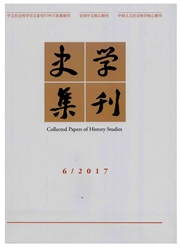

 中文摘要:
中文摘要:
入閤礼在契丹传统礼仪生活和宗教信仰中找不到任何痕迹,其作为朝谒礼仪的一种起源于唐朝,与当时的内朝制度关系密切。唐末因乱礼阙,皇帝渐废正衙视朝,而入閤日重。五代之后皇帝于每月朔望日御正衙入閤成为定制,入閤礼遂成五代盛礼。辽太宗时期两次行入閤礼的实践,既体现了在辽初礼制建设中对中原五代礼制的继承,也是契丹国家性质转变的外在表现。辽朝中后期,在国家礼制建设日趋完善的同时,由于受北宋及契丹国家二元政治体制的影响,入閤礼废置不行。但是中央官系统中的东西上閤门司却得以保留,成为职掌辽朝礼仪的主要部门之一,在辽朝中后期国家礼仪生活中发挥重要作用。
 英文摘要:
英文摘要:
In traditional Khitan etiquettes and religious beliefs, nothing could be found about Ru Ge Yi (入閤礼). The ceremony of Ru Ge Li can be traced from Tang Dynasty, which is one kind of the ceremonies in royal court. It is closely connected with the inner court system. In late Tang Dynasty, because of the war, some eti- queues have been abolished, including the formal court ceremony called Zheng Ya Shi Chao (正衙视朝) . As a result, Ru Ge Li has become the most important ceremony in royal court, and the emperors in the Five Dynasties have made it a system to go to the court in the first and fifteenth day every month as Ru Ge (入閤). Emperor Tai Zong (辽太宗) has hold the ceremony twice, which shows the inheritance of the etiquettes in the Five Dy- nasties and suggests the shift of Khitan country's nature. In middle and later Liao Dynasty, the country's etiquette system has been developed greatly. Because of the impact of Song Dynasty and the binary system of Khitan coun- try, Ru Ge Li has been abolished finally, whereas the official elements of the ceremony in central official system has been saved and become one of the main department managing the etiquette system of Liao Dynasty, which is the official of Dong Xi Shang Ge Men Si (东西上閤门司). It plays a great role in the country's etiquette life in middle and later Liao Dynasty.
 同期刊论文项目
同期刊论文项目
 同项目期刊论文
同项目期刊论文
 期刊信息
期刊信息
